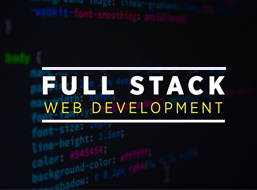Table of contents:
|
1. What Is Prompt Engineering? |
|
2. Why Prompt Engineering Is So Critical |
|
3. Prompt Engineering Roadmap: How to Develop It |
|
4. Essential Prompt Engineering Skills You Need |
|
5. Popular Prompt Engineering Tools to Use |
|
6. Getting Certified: Prompt Engineering Certification & Courses |
|
7. Your Path Through Apponix |
|
8. Final Thoughts |
|
9. FAQs |
In today’s AI-driven world, prompt engineering stands out as one of the most in-demand skills in the tech landscape. Every successful interaction with advanced language models depends on how well we craft prompts.
As a trainer at Apponix, I’ve seen firsthand how students who master prompt engineering skills can bridge the gap between human intent and AI output.
This blog will act as your prompt engineering guide, walking you through skills, tools, roadmaps, certification, and how you can train right here in Bangalore.
What Is Prompt Engineering?

Prompt engineering is the art of formulating precise, structured inputs (prompts) for AI models so that they return meaningful, accurate, and usable responses. It’s not just about asking a question; it’s about designing the way you ask a question so the AI understands what you want, stays on track, and avoids hallucinations. The better the prompt, the better the output.
When working with models like ChatGPT or other large language models (LLMs), prompt engineering AI techniques influence tone, detail, logic, and structure. It’s the bridge between your requirements and the AI’s capability to execute.
Why Prompt Engineering Is So Critical
-
Control over output quality: A well-crafted prompt steers the AI toward accuracy, relevance, and useful structure.
-
Efficiency gains: Instead of tweaking model settings or fine-tuning models every time, prompt engineering gives you control without heavy compute.
-
Versatility across domains: Whether it’s content generation, analysis, creative writing, code, or conversation, prompt engineering is everywhere.
-
Growing industry demand: As organizations adopt generative AI, the ability to design prompts well is becoming a specialized role.
-
Cost optimization: Better prompts can reduce the number of retries, token usage, and extra constraints.
Because of these leverage points, prompt engineering is no longer a fringe skill; it’s becoming central to AI development and adoption.
Prompt Engineering Roadmap: How to Develop It
Here is a roadmap you can follow to build your competence in prompt engineering:
-
Learn foundational AI & language model concepts
Start by understanding natural language processing (NLP), the basics of machine learning, and how transformer architectures work. This gives you insight into how models interpret prompts. -
Familiarize yourself with prompt styles & techniques.
Explore zero-shot prompts (no examples), one-shot, few-shot prompts (with examples), chain-of-thought prompting, role prompting (asking the model to assume a persona), and iterative prompting. -
Practice prompt engineering tools.
Utilise playgrounds or APIs (such as OpenAI and Hugging Face) to test your prompts. Try frameworks or prompt libraries that help structure or template prompts. -
Refine via feedback & evaluation.
See how your prompt outputs vary, iterate, add constraints or examples, and compare. Keep track of what changes improve or worsen results. -
Specialize in domain or task prompts.
You can specialize in prompts for content creation, code generation, summarisation, chatbots, legal, medical, or business tasks. -
Learn about fine-tuning & prompt tuning.
When simple prompting isn’t enough, you might move into fine-tuning models or using techniques like prompt tuning, prefix tuning, or adapters to push the performance further. -
Build a portfolio and contribute.
Showcase your best prompts, projects, and case studies. Share on communities, blogs, or open-source platforms. That becomes proof of your prompt engineering skills.
This roadmap gives structure to your learning. You will find many online guides following a similar stepwise path.
Essential Prompt Engineering Skills You Need
-
Linguistic & semantic awareness: Knowing how wording, tone, and subtle phrasing affect meaning.
-
Logical structuring & stepwise thinking: Breaking complex tasks into subprompts or chains of reasoning.
-
Domain knowledge: If you're prompting for law, health, or business, domain insight matters.
-
Experimentation mindset: You must constantly test, adjust, and learn from outputs.
-
Understanding model limitations: Knowing when a model might hallucinate, be biased, or misinterpret instructions.
-
Tool integration & API usage: Working with prompt engineering tools, SDKs, wrappers, or prompt libraries.
-
Data & metrics orientation: Measuring prompt performance (accuracy, efficiency, relevance) to improve.
These skills will help you not just ask the right questions but become a prompt engineer people rely on to get AI to do what they intend.
Popular Prompt Engineering Tools to Use
Here are tools and platforms that help in prompt design, testing, or automation:
-
Prompt playgrounds and consoles (OpenAI Playground, Hugging Face Inference API)
-
Prompt template libraries (tools or SDKs that help you parameterize prompts)
-
Prompt orchestration frameworks (for combining multiple prompts or chains)
-
Prompt evaluation tools (which compare outputs, score them, and detect hallucinations)
-
API clients and wrappers (Python, JS) to embed prompting into code
-
Prompt tuning or adapter libraries for more advanced model control
These tools let you test, iterate, and integrate prompts in real applications.
Getting Certified: Prompt Engineering Certification & Courses
To formalize your skills, many institutes offer prompt engineering certification, especially in combination with AI and generative AI. A certification or course demonstrating you can design quality prompts, leverage AI tools, and work with LLMs strengthens your credibility.
Several training bodies in Bangalore and India offer courses in prompt engineering. These often include hands-on labs, real-world prompt challenges, certification, and placement support.
When choosing a course or certificate, check for: real prompt practice, exposure to tools, project work, guidance, and continuous updates (since AI evolves fast).
Your Path Through Apponix
As your trainer at Apponix, I design our prompt engineering training so that you not only learn the theory but also live it. You’ll work on real prompts, iterate in groups, get feedback, refine, and ultimately build a demo project you can show to employers.
We also emphasize integration with our Artificial Intelligence (AI) course in Bangalore, so your skills are grounded in broader AI understanding.
Our training covers the roadmap, tools, skills, and certification prep. You will graduate with a portfolio you can confidently present to tech companies, research labs, startups, or any AI-driven team.
Final thoughts
As a trainer at Apponix Training Institute in Bangalore, I deeply believe prompt engineering is one of the defining skills of our AI era. When you master prompt engineering skills, you gain the ability to translate human intent into AI action. That’s not just useful—it’s powerful.
From building clear prompts to mastering prompt engineering tools to taking advanced courses or certifications, your journey is full of direction and opportunities. For those based in Bangalore or seeking a structured learning path, combining our prompt engineering training with an Artificial Intelligence (AI) course in Bangalore can give you an edge.
I’ve guided many students who began with zero exposure through structured practice, guided iterations, and a focus on quality over quantity, and now they land roles related to AI prompt design, generative systems consultation, or integration roles where prompting is critical. I’d love to see you in that cohort next.
FAQs
Q1: What is the difference between prompt engineering and fine-tuning?
Prompt engineering uses carefully designed inputs to guide model behavior. Fine-tuning modifies the model’s weights using custom data to make it better at certain tasks. Prompt engineering is lighter and quicker, but has limits; fine-tuning is powerful but more resource-intensive.
Q2: Do I need programming skills for prompt engineering?
Basic programming helps, especially when integrating prompts into apps or using APIs. But you can start with minimal coding using playgrounds and evolve from there.
Q3: How long does it take to become proficient in prompt engineering?
It depends on your background and learning pace. Many can build solid skills in 2–3 months with consistent practice following the roadmap. Deep mastery may take longer.
Q4: Are prompt engineering roles available in Bangalore / India?
Yes. As AI adoption grows, companies look for prompt engineering skills within AI teams, product teams, chatbot teams, NLP divisions, or innovation labs. Having a portfolio and project experience helps.
Q5: Can prompt engineering become obsolete?
While AI models will evolve, the need for human guidance, structuring intent, constraints, and logic will always remain. Prompt engineering will evolve alongside AI, not vanish.




